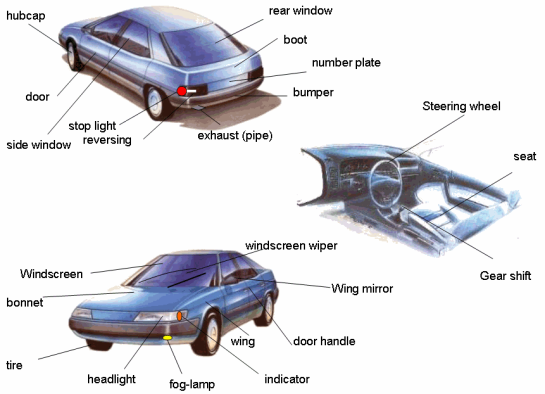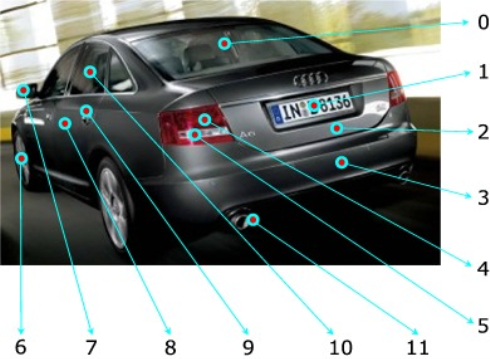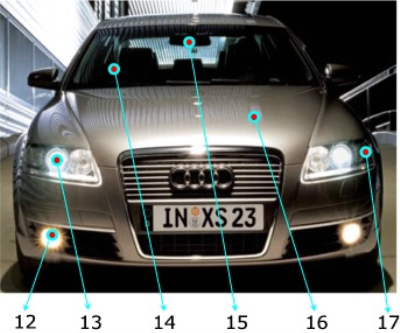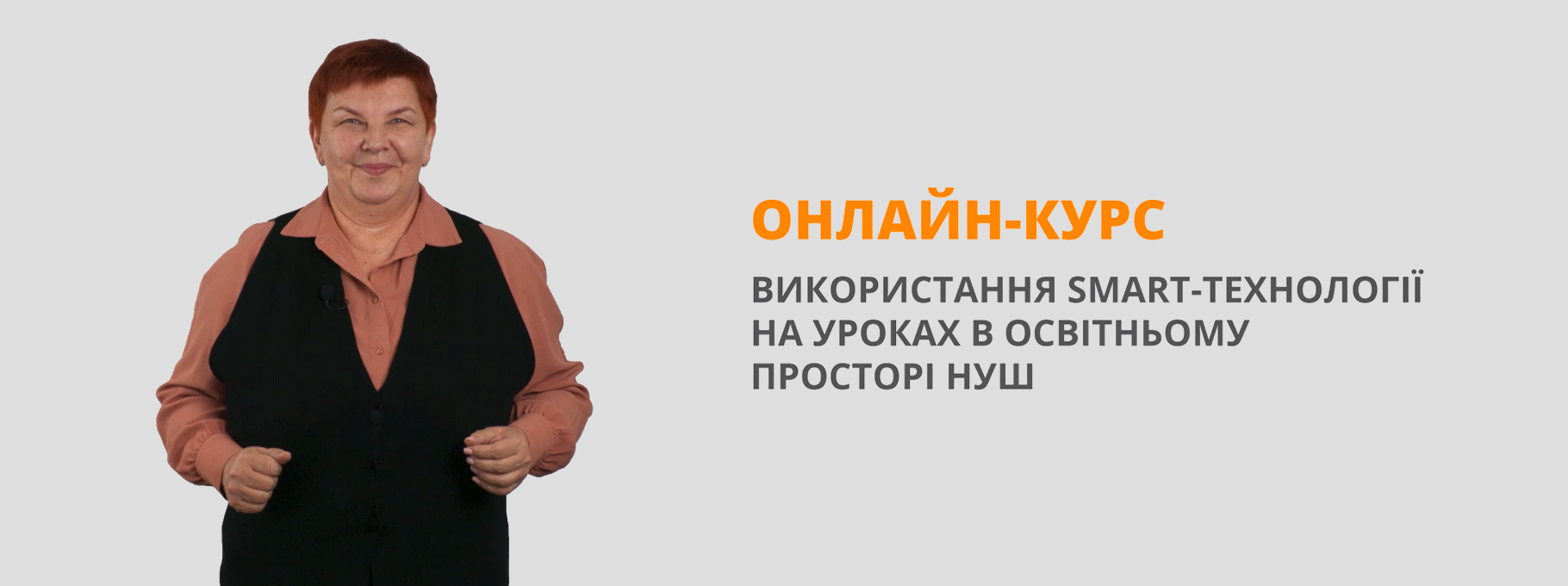Урок "Моя майбутня професія - автослюсар"
МІНІСТЕРСТВО ОСВІТИ І НАУКИ УКРАЇНИ
УПРАВЛІННЯ ОСВІТИ, НАУКИ, МОЛОДІ ТА СПОРТУ
КІРОВОГРАДСЬКОЇ ОБЛДЕРЖАДМІНІСТРАЦІЇ
РЕГІОНАЛЬНИЙ ЦЕНТР ПРОФЕСІЙНОЇ ОСВІТИ
ІМЕНІ О.С.ЄГОРОВА
Методична розробка уроку
з іноземної мови на тему
«Моя майбутня професія – автослюсар»
Підготувалa:
Людмила Василівна Сосновська,
викладач іноземної мови
ПЛАН УРОКУ
ПРОФЕСІЯ: Слюсар з ремонту автомобілів. Монтувальник шин
ТЕМА ПРОГРАМИ: «Робота і професії. Моя майбутня професія»
ТЕМА УРОКУ: «Моя майбутня професія – автослюсар. Будова автомобіля»
МЕТА УРОКУ:
НАВЧАЛЬНА:
розширити лексичний запас професійної лексики та активізувати її вживання через різні види мовленнєвої діяльності: читання, аудіювання, говоріння та письмо; вдосконалювати навички усного діалогічного мовлення.
РОЗВИВАЮЧА:
розвивати комунікативні компетенції учнів, пам'ять, увагу, логічне мислення, уміння самостійно працювати через використання інтерактивних форм і методів роботи та створення учнівських проектів.
ВИХОВНА:
виховувати культуру спілкування, прагнення до професійного зростання та самовдосконалення, бажання отримувати нові знання та застосовувати їх у практичній діяльності, сприяти зацікавленості до вивчення іноземної мови.
МЕТОДИЧНА: формувати професійні компетентності шляхом впровадження інноваційних технологій навчання.
ТИП УРОКУ: навчально – практичне заняття з елементами тестування
МЕТОД ПРОВЕДЕННЯ: словесний, наочний, практичний.
МІЖПРЕДМЕТНІ ЗВ’ЯЗКИ:
спеціальна технологія з ремонту автомобіля – розділи: «Будова автомобіля», «Технічне обслуговування автомобіля», «Ремонт автомобіля»;
виробниче навчання – тема: «Розбирально-складальні роботи. Ремонт автомобіля»;
інформаційні технології – тема: «Розробка слайдової презентації».
ЗАСОБИ НАВЧАННЯ:
комп’ютер, проектор.
ОБЛАДНАННЯ ТА НАОЧНІСТЬ:
- текст для розвитку навичок читання «My future profession» та тестові завдання до нього ;
- ілюстровані картки з лексикою «Будова автомобіля. Зовнішній вигляд»;
- презентація «My future profession»;
- текст для розвитку навичок аудіювання «Driving a car» та завдання до нього;
- відео «Car Part I»;
- дидактичний матеріал для розвитку навичок письма;
- перелік виробничих ситуацій;
- зразок діалогу для розвитку навичок говоріння;
- фото різних марок автомобіля.
ОЧІКУВАНІ РЕЗУЛЬТАТИ
Учень повинен знати:
- лексику з теми;
- назви частин автомобіля англійською мовою;
- різні типи питальних речень;
- правила будови англійського речення.
Учень повинен уміти:
- давати відповіді на питання учнів та викладача, підтримувати бесіду;
- виконувати тестові завдання;
- раціонально використовувати додаткові джерелами інформації під час
підготовки слайдової презентації;
- отримувати нові знання та застосовувати їх у практичній діяльності;
- сприймати на слух інформацію англійською мовою.
Хід уроку
I. Підготовка до сприйняття іншомовного мовлення
1. Привітання, організація учнів
2. Повідомлення теми та мети уроку
3. Уведення в іншомовну атмосферу
T. Glad to see you in a good mood. Today we’ll continue to speak about your future profession. But at first I want one of you think of a job. Your partner tries to guess it asking questions.
1. Do you work in an office?
2. Do you drive a car?
3. Do you wear a uniform?
4. Is your job normally done by women?
5. Is your job generally well-paid?
6. Is your job very stressful?
7. Do you have long holidays?
8. Is your job very dangerous?
9. Do you need to get up very early?
10. Do you work indoors or outdoors?
11. Do you do manual work?
12. Do you like talking to people?
13. Do you prefer to work alone?
14. Are you energetic?
15. Do you like organizing things?
16. Are you patient?
17. Do you like animals?
18. Do you like to work with your hands?
19. Do you work with numbers?
20. Do you like children?
21. Do you like looking after people?
22. Do you like working at night?
II. Основна частина уроку
1. Vocabulary Practice
T. I think it was very interesting to guess the job. Your future profession is a car- repairer. . A skilled car-repairer must know the structure of a car. And now let’s revise the names of the parts of a car. Look at the picture of a car and translate the names of different parts. (Учні діляться на групи, кожна з яких працює зі своїм малюнком зовнішнього виду автомобіля, складають словник професійної лексики)

0 rear window
backlight (AE)
1 number plate
license plate (AE)
2 boot (BE)
trunk (AE)
3 bumper
4 stop light
brake light (AE)
5 reversing
back-up light (AE)
6 front wheel; front tyre
front tire (AE)
7 (out) side mirror,
side-view mirror, outside rear-view mirror
8 door
9 door handle
10 side window
11 exhaust (pipe)

12 fog-light
13 headlight
14 windscreen
windshield (AE)
15 rear-view mirror
16 bonnet (BE)
hood (AE)
17 indicator
turn signal (AE)
blinker (informal)
T. Now let’s watch the video “Car Part I” and once more review the names of the car’s parts. (Учні переглядають відео, повторюють вголос назви частин автомобіля).
2. Reading
Pre-reading activity
T. I want we’ll speak about your future profession and begin this part of our lesson with some questions
- What school did you finish?
- What is your future profession?
- Why do you choose this profession?
- Who helps you to choose your profession?
While-reading activity
T. Now let’s read the text about your future profession and after that will be ready to do a short test.
My future profession
I am a student of the Regional centre. I am in the third year. My future profession is a car-repairer. My future profession is interesting and important. It demands high level of manual skill and a certain period of practical and theoretical training. We are trained to be highly qualified car-repairers.
We must know the structure of a car and features of metals. A skilled car-repairer like a doctor must define disrepairs and make first-aid repair and remove other disrepairs with help of such tools as a drill, a file, a probe, a hammer and special equipment. To repair a car he must perform such operations as measuring, adjusting, soldering, riveting, milling, painting. Besides, it is necessary to follow the rules of safety techniques to prevent accidents.
Once a week we have practical training in our workshop and at the end of our study we have practice in the car-repair garage or at the maintenance shop.
Post-reading activity
T. Read the sentences and choose the right variant of the word
- My future profession is
- a cook
- a builder
- a car-repairer
- We must know the structure of
- a car
- furniture
- a stone
- A skilled car-repairer defines
- an order
- disrepairs
- a disorder.
- To repair a car a car-repairer uses
- a pen, an eraser, a pencil
- a plate, a fork, a knife
- a file, a drill, a hammer.
- A car-repairer performs such operations as
- reading, writing and listening
- measuring, adjusting and painting
- papering, painting and plastering.
- It is necessary to follow the rules of
- good manners
- safety techniques
- table behavior
Presentation Перегляд презентації «Моя майбутня професія», підготовленої групою учнів як випереджувальне завдання.
Робота у парах (Учні ставлять один одному запитання за змістом презентації та тексту, дають на них відповіді).
- Why do you like your future profession?
- What special and theoretical subjects do you study at technical servicing?
- What tools do you use in your workshop at our trade lyceum?
- What kind of training operations do you make at the workshop?
- Where did you have your practical work?
- What did you do during your work in a car workshop?
T: You did your work well and now we are going to have a rest. Do you think you know cars well? Try to match nameplates’ emblems to their names. (Викладач використовує таблицю логотипів автомобілів)
Listening
T: I see you know the trade marks of automobiles perfectly. What mark of your own car do you want to have in future? Do you know the most famous automobile concerns? Anybody can drive a car? I see you can. But do you know driving habits well? I think you will listen to the text and get some good pieces of advice about driving habits.
Pre-listening T: before listening let’s read some useful words from the blackboard. Read these words in chain, please.
To drive – управляти машиною, to brake – гальмувати, to crash into – врізатися в , to overtake – обганяти, to accelerate – прискорювати, збільшувати швидкість, to drive under the speed limit – їхати з обмеженням швидкості, to run over – наїжджати, to slow down – пригальмувати, to put the car in gear – включати передачу.
While-listening
Driving a car
Here is a list of good driving habits.
- It is dangerous to drive too close to the car in front of you. If it stops suddenly, you may not be able to brake in time and then you will crash into it.
- Overtake the car in front of you with great care. When you are absolutely sure that the road ahead is clear, change lanes, accelerate and overtake quickly.
- If the weather is bad, you should drive under the speed limit. Never drive over the speed limit.
- Children get run over because they run out the street without looking. When you see children playing, you should slow down and drive very carefully.
- If you have to park on a hill. Put the handbrake on. Also put the car in gear (not neutral) and turn the front wheels towards the side of the road.
- Use your rear-view mirror frequently to see what the traffic is doing on the road behind you. Good drives look in their rear-mirrors at least once every five seconds.
- Keep your car in good condition. Check often to see whether you have enough oil in your engine, enough air in your tires and enough water in your radiator. Make sure all your lights (headlights, sidelights and indicators) are working. Only drive with brakes that are in good condition.
- Always wear your seat belt. You do not want to go through the windscreen if the car stops suddenly.
Post-listening T: Put «+» if the sentences are right and «–» if the sentences are wrong.
- It is dangerous to drive too close to the car in front of you.
- If the weather is bad, you should drive under the speed limit.
- Children get run over because they run out into the street without looking.
- When you see children playing you should drive very carefully.
- Always drive over the speed limit.
- Good drives look in their mirrors at last once every five seconds.
- Keep your car in a bad condition.
- Only drive with brakes that are in good condition.
- Never wear seat belt.
- Make sure all your lights are working.
Speaking
T: I want you to make up three groups. And imagine you are at a car workshop. You have three situations. Your task is to make up a dialogue between a client and a car-repairer using such words and word-combinations.
- The first situation is to change the car tire.
- put on the wheel;
- take off the wheel;
- turn off nuts and screws;
- use a car lifter to lift the car;
- use tire mounting tools;
- inflate a tire;
- tighten all the screws and nuts
- check the tire pressure;
- change the tire.
- The second situation is as a specialist tell a client the possible reason of disrepairs
- The brakes won’t start you need to change the tires
- The engine is knocking the shortage of brake liquid
- The battery overheats you need to charge the battery
- The car are bad add some petrol
- The radiator is out of order examine the battery
- The tires don’t work
- The last situation is to remove disrepair of brakes.
- Can you help me?
- What’s the trouble?
- What’s the matter?
- Something is wrong with…
- Let’s have a look (Let me see…).
- It is necessary…to be adjusted.
T. Are any volunteers in your group? I have interesting task for them. Read the interview, match the questions with the answers and act out the interview in pairs.
1. What is your name? a) £180 rent per month, £200 clothes, £150
food, £60 rest, £50 magazines and books
2. How old are you? b) Journalist in a local newspaper
3. What do you do? c) 12 St. John’s Street, Bristol.
4. Where do you work? d) 22
5. What do you wear to work? e) Jessica Smith
6. How much do you earn? f) £11000 - £18000 per year.
7. What do you spend it on? g) Everything goes – casual.
Writing
T. Read the sentences and write down the names of these parts of a car. You may use dictionaries.
1. Keeps you cool in the car. AIR CONDITIONER
2. Where you will find the speedometer. DASHBOARD
3. Pull this to enter the car. DOOR HANDLE
4. Open this to fill up. FUEL CAP
5. Must be worn at all times. SEAT BELT
6. Use this to start your engine. IGNITION KEY
7. The car's number is found on the front and rear. LICENSE PLATE
8. You will find one of these in the boot. SPARE TYRE
9. Change this when speeding up or slowing down. GEAR
10. The front window is a WINDSCREEN
11. Safety device for front seat passengers. AIRBAG
12. Look what's behind you. REAR-VIEW MIRROR
13. When the car has stopped apply this. HANDBRAKE
14. This is found between the seats. ARMREST
T. Find the right word
1. Another word for 'car' is (wagon, cartoon, automobile)
2. A person who fixes a car is a (carman, mechanic, jockey)
3. At night, when you drive, you must switch on your (rearlight, lampers, lights)
4. When you make a turn, you must switch on your (turners, indications, indicators)
5. Car fuel is called 'gas' in America and (paper, oil, petrol) in England.
6. Your car starts by using electric power from the (battery, fuel tank, energizer)
7. When you drive, you hold the (steering wheel, steers, styrofoam)
8. When you add power to speed up, you change your (belt, gear, wheel)
9. A car that has no gears is called an (autobahn, automatic, autocrat)
10. The front and back parts of a car are the (bumps, bumpers, bumpies)
Summering T: Thank you everybody for good working at the lesson. And I think you are ready to do your test at the next lesson. Your home task is to revise vocabulary and be ready for the checking up tests.


про публікацію авторської розробки
Додати розробку
